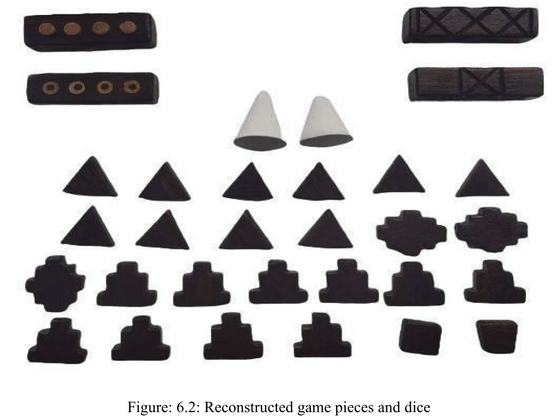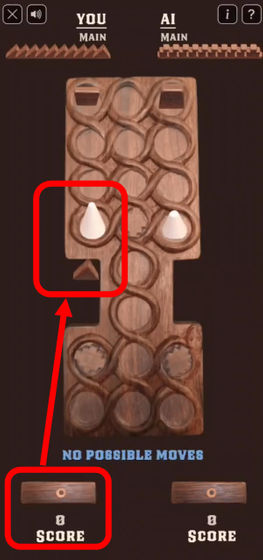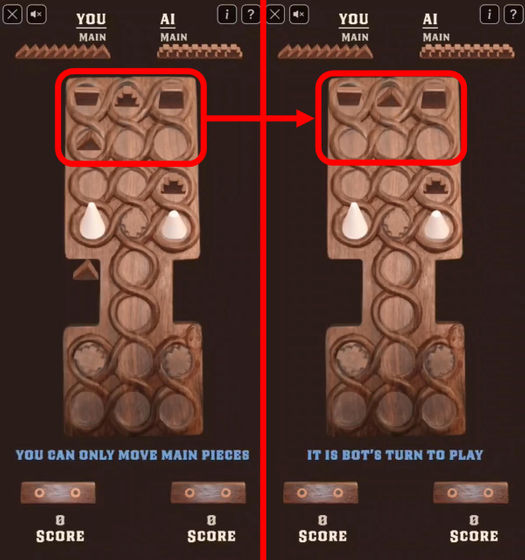AI uncovers how to play a 4,500-year-old board game that's remained a mystery for half a century

A study using an AI model to analyze an ancient board and pieces set excavated from a desert ruin has reported that an artifact found in a tomb about 4,500 years ago has been revived as a board game that modern people can enjoy.
SocArXiv Papers | Analysis of the Shahr-i Sokhta Board Game with 27 Pieces and Suggested Rules Based on the Game of Ur
Lost Rules to One of The Oldest Board Games May at Last Be Known : ScienceAlert
https://www.sciencealert.com/lost-rules-to-one-of-the-oldest-board-games-may-at-last-be-known
The Shahr-i Sokhta Board Game
https://persianwonders.com/Game/The-Shahr-i-Sokhta-Game
In their study, Sam Gervais, a computer scientist at the University of Essex in the UK, and Hossein Moradi, an independent archaeologist, studied a board game known as the 'SiS game,' discovered in 1977 at the Shahr-i Sokhta (SiS) archaeological site in southeastern Iran.

Below is a picture of the SiS game excavated at the ruins known as 'Tomb 731' (top) and a reproduction of the entire set of the SiS game that was found (bottom). This type of game is called the '20-square game' or 'game of 20' among archaeologists, and literally consists of a board with 20 squares, 27 pieces, and four long, thin dice.

The shape of the board is very similar to a game from the same era called the '

The research group combined archaeological evidence based on artifacts from the same period with modern inference tools using probability models to identify the roles of the pieces and reconstruct how ancient people played the SiS game.

According to the research group, the board of the SiS game was likely composed of three sections: the 'main part' where the pieces were placed, the 'bridge' leading to the goal, and the 'head and tail of the snake' which were the final destinations for each player.

The 27 pieces are speculated to be divided into two sets of 10 'runners' which represent each player's hand pieces, three star-shaped pieces which represent 'safe houses' where runners can temporarily escape, and two cone and two square pieces which act as 'blockers' which act as obstacles.

The game is based on a racing motif and is a two-player game similar to Sugoroku, in which each player takes turns rolling the dice to move their piece to the finish line. Each play takes about 30 to 45 minutes.

Check out the video below to see how the game works:
It is the left player's turn and the dice show a 1, but he cannot start because there is an obstacle at the start.

The player on the right rolls a 2, so moves his piece two spaces.

If you move your piece to the same position as your opponent's piece, you can knock the opponent's piece out of the game. The knocked piece will return to the opponent's hand.

If you roll a 3, you can move the obstacle piece. If you roll a 1 or 4 in the initial placement, you cannot start the race because of the obstacle, but by removing the obstacle, you can gain an advantage on the board. You can also move the obstacle to knock your opponent's piece away.

When your hand reaches a safe house piece (three pieces placed on the board), you are given the chance to roll the dice twice in a row. You can also send out your next piece while you still have your hand pieces remaining. Depending on the roll, you can prioritize rushing to the safe house, or wait until you see a roll that will not hit an obstacle before sending out your next runner.

If the piece emerges from the snake's head, one point is earned, and the player who reaches 10 points first - that is, the first player to get all of their runners to the finish line - wins.

A SiS game based on these rules was recreated and played by 50 experienced board game players, who praised it for its originality and replayability.

This research is based on speculation, so it does not yet clarify exactly how the SiS game was played, but the researchers wrote in their paper, 'This research has the potential to revolutionize our understanding of Near Eastern board games by revealing the meaning of the game pieces.'
You can play this game against an AI by visiting the following site:
The Game of 20 | The Shahr-i Sokhta Board Game

Related Posts:







